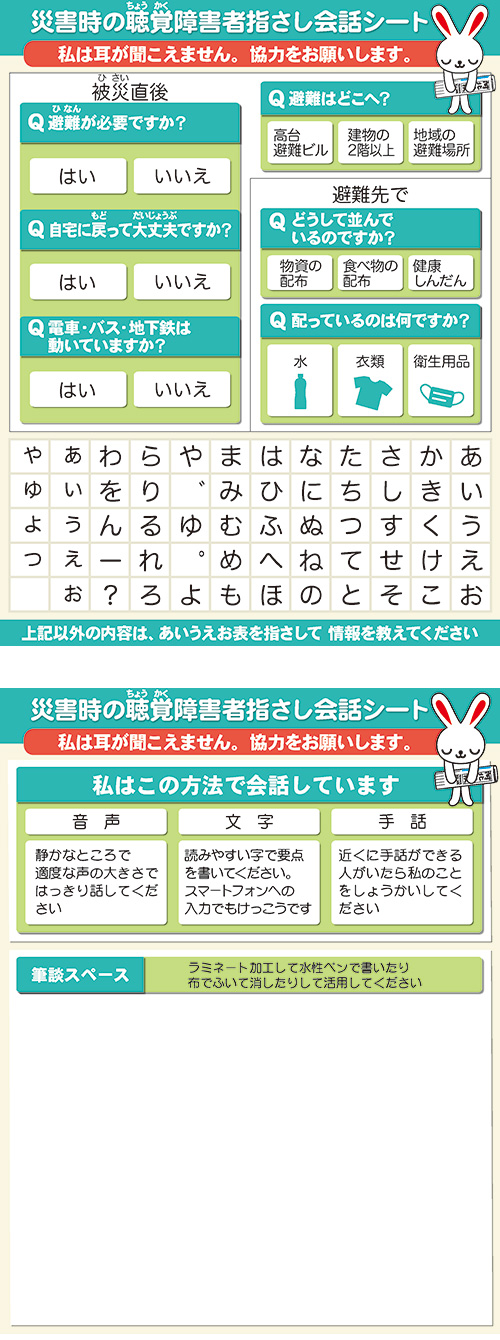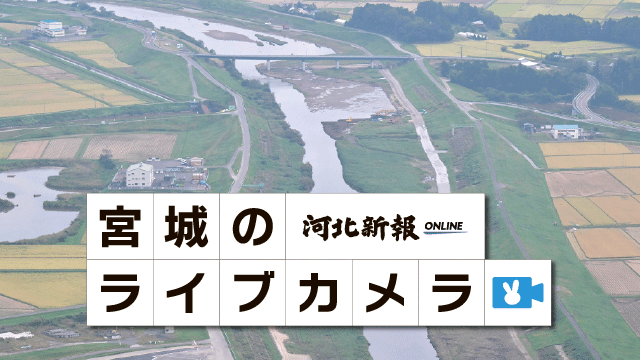Part 8: Teachings (3-End) Self-preservation and Cooperation / Neighbors Protect the Elderly




At Katsurashima Island of Shiogama City, which floats on the Matsushima Bay, one in every two residents is over 65 years old. Although the island received damage from the tsunami, they did not have a single casualty from the Great East Japan Earthquake. The islanders cooperated with each other to protect lives that cannot be saved by teachings such as “tsunami tendenko” (to each his/her own) and “proactive evacuation,” which encourage the protection of your own life.
After the earthquake, nori (laver) farmer Shigeo Utsumi (53) ran to a processing plant along the sea, and ordered his wife and employees to escape. He ran back to his pickup truck, placed his son and daughter on the back, and was about to start the car.
An 80-year old neighbor caught his eye. Her leg muscles were weak, and she was standing by using her umbrella as a walking stick. She would not be able to reach higher ground at the former Urato Second Elementary School, unless she stopped to take many rests along the way.
He drove the pickup truck towards her, and yelled loudly. “Get in!” His children pull her on to the back platform. He later helped another 80-year old lady who passed by. She was heading home to retrieve her valuables, and hesitated to ride the car. “Take care of that later!” he said, and pushed her into the passenger seat.
After the shaking subsided, nori farmer Hiromichi Utsumi (38) headed towards the fisheries co-op branch in order to borrow a pickup truck and evacuate an elderly couple living nearby. He heard the major tsunami warning on the emergency radio line.
The husband uses an electric mobility scooter to move. When a major tsunami warning was issued for the Great Chile Earthquake Tsunami of 2010, the couple had refused to escape, and took a long time to come out.
Utsumi opened their entrance and barged his way into the house, calling out, ”Get in the car!” The two did not attempt to escape. He pulled them out of the house, and started the car.
Along the way he picked up an elderly who was walking slowly, and arrived at the evacuation center, the former Urato Second Elementary School. He returned back to the village, picking up two more people.
In the meantime, fire corps volunteers who had gathered at their station also leapt in their pickup trucks. They dispersed across the villages to transport the elderly who were slow to escape. “I know exactly who needs assistance, and where they live,” says then-Corps Leader, Masaru Utsumi (69).
In the schoolyard of the former Urato Second Elementary School, pickup trucks arrived one after another, carrying the elderly on the back or the passenger seats. Residents who had evacuated ran up to help them off the back of the trucks.
It was around 3:15 p.m. when the evacuation was complete. Within half an hour of the quake, nearly 30 elderly were carried to the schoolyard. Around 20 minutes later, a tsunami over 10 meters high hit the city. Out of the 93 residences, around 40 were completely destroyed.
Katsurashima Island had the necessary conditions for assisted evacuation. The circumference of the island is 6.8 km. While the population of the island is around 230, it decreases to around 160 during the day, as residents leave for work outside of the island. With a couple of cars, it is possible to search the entire island in a short period of time.
There are many residents who experienced the 1960 Chile Earthquake Tsunami, and had a heightened sense of crisis towards tsunamis. After the severe quake, those who could walk escaped quickly to higher ground. There was a limited number of elderly who needed help with evacuation.
Pickup trucks played a major part in transportation. They can navigate narrow roads, and carry luggage in the back. A majority of the residents are owners.
Village size, evacuation awareness, mobility ? the bond between residents enabled these conditions to lead to a successful story of collaboration. Most residents have lived in the land for generations. “Throughout the ages, isolated islands had to deal with disasters and accidents on their own. It is natural for the residents to help each other,” says Kumezo Utsumi (72), District Mayor.
◎Self-preservation and cooperation are not contradictory / Repeated training prevents deadly situations from spreading
Helping others during tsunami evacuation could lead to mutually destructive situations. There are those who strongly believe that children should not bear the responsibility of cooperation.
Minamisanriku Town, Miyagi Prefecture, immediately after the earthquake. A special care nursing home below Shizugawa High School (355 students), which stands on high ground, was hit by the tsunami. Staff carried the elderly on their backs as they climbed the stairs. Some of the staff became soaking wet in the process.
The students could not sit still, and after the first wave receded, a total of 10 teachers and students in the soccer and baseball teams went down to the nursing home, carrying the elderly up to the school building. The students ran to head back down, but a teacher stopped them at the stairs. “Don’t go back anymore.”
Soccer coach Yasunori Mogi (30) reflects, “I regret putting the students in danger despite the incoming tsunami. The children carry the future of the town. It is enough for them to survive.” Since the earthquake, he has been instructing students to place their own lives first.
Hashikami junior high school (115 students) of Kesennuma City, which places an emphasis on disaster prevention education, changed their curriculum after the earthquake. They had been teaching “self-preservation,” “cooperation,” and “public assistance” respectively each year, but the new curriculum prioritizes self-preservation. The themes are now “self-preservation,” “cooperation based on self-preservation,” and “public assistance based on self-preservation.”
Three students lost their lives during the earthquake, some swallowed by the tsunami while at an evacuation center. Residents who escaped with them shared the assumption that “the tsunami won’t reach here.” Kyo Sato (51), Vice Principal, says, “The students could have been saved, had they decided to escape to a safer place. Only by saving yourself first could cooperation become possible.”
The late Fumio Yamashita, a tsunami researcher from Ofutano City who developed the concept of “tsunami tendenko,” (to each his/her own), had been concerned that “’Tendenko’ will not be able to save certain lives.”
He was referring to the elderly and vulnerable, who cannot escape on their own. Yamashita urged in his writings, however, that “a vague sense of responsibility to help could only spread the deadly situation to others, including yourself.” His concerns became reality during the recent earthquake.
There are no easy solutions for questions surrounding the vulnerable. Both those who help and those who are helped face the dangers of the tsunami. Even so, residents in the coastal and disaster-stricken areas exchange ideas to save as many lives as possible, based on lessons from the earthquake.
“Yamashita called for communities to come together and discuss how to evacuate the vulnerable based on the premise of ‘tendenko,’” remembers Makoto Yoshimizu (62), a friend of Yamashita and former Miyako City official.
It is in the nature of humans to act based on a charitable spirit. However, this mindset should not produce additional victims. Yoshimizu suggests, “I hope communities will repeat training in order to develop the decisiveness that is necessary to avoid mutual destruction. The ideas of tendenko and cooperation are not contradictory.”
Geography, population structure, roads…every community carries unique circumstances. Continuing the training, and searching for ways to take the best course of action during a large-scale disaster through self-preservation and cooperation. This is what will preserve the lives of residents and the community.
(“Preserve Lives and Communities” Investigation team)
【Photo02】Children, their mothers, and the elderly evacuating during a tsunami evacuation training session at Iwanuma City. Lives can be saved by making preparations particular to the region, and testing them out = September 1, 2012, Oshiwake Shindento, Iwanuma City
Translated by Anna Wada
June 25, 2013 (Tues.)
[Japanese] http://www.kahoku.co.jp/special/spe1114/20130625_01.html
みやぎ地域安全情報
宮城県警 みやぎセキュリティメールより
- 女性に対する不審者事案の発生【山元町】
- 特殊詐欺の予兆電話について(黒川郡大和町)
- 女性に対する盗撮事案の発生【青葉区】
- 女性に対するつきまとい事案の発生【大崎市】
- 特殊詐欺の予兆電話について(気仙沼市)
- オレオレ詐欺の特殊詐欺注意報(仙台市泉区)
- 刃物ようのものを持った男の目撃情報について(大崎市)
- オレオレ詐欺の特殊詐欺注意報(仙台市宮城野区)
- 特殊詐欺の予兆電話について(松島町)
- オレオレ詐欺の特殊詐欺注意報(仙台市太白区)
- オレオレ詐欺の特殊詐欺注意報(石巻市)
- 特殊詐欺の予兆電話について(蔵王町)
- 不審電話について(黒川郡大衡村)
- オレオレ詐欺の特殊詐欺注意報(登米市)
- オレオレ詐欺の特殊詐欺注意報(石巻市)
- 特殊詐欺の予兆電話について(仙台市泉区)
- 特殊詐欺の予兆電話について(加美郡加美町)
- オレオレ詐欺の特殊詐欺注意報(仙台市宮城野区)
- 特殊詐欺の予兆電話について(大崎市)
- オレオレ詐欺の特殊詐欺注意報(亘理郡亘理町)
- 女性に対するつきまとい事案の発生【大和町】
- 特殊詐欺の予兆電話について(仙台市泉区)
 朝刊・夕刊
朝刊・夕刊 記事を探す
記事を探す FAQ
FAQ







